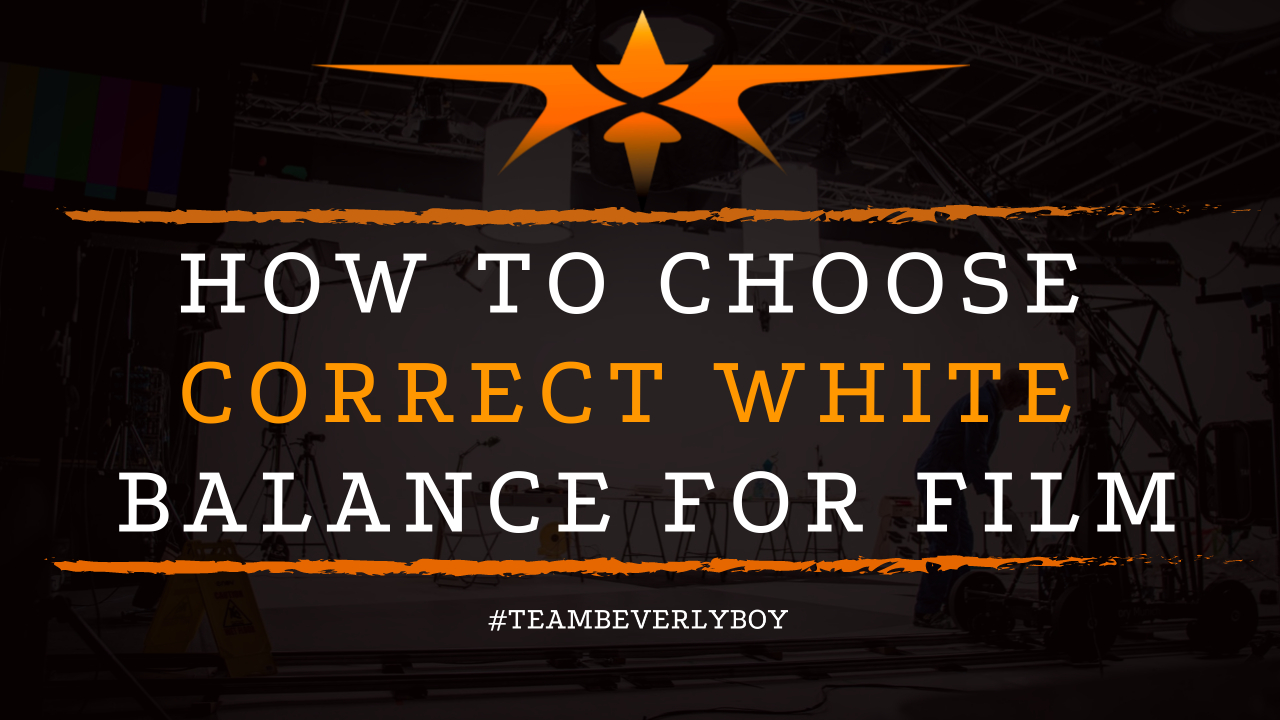
How to Choose Correct White Balance for Film
What is white balance and what do you mean white isn’t always white? As a newly aspiring cinematographer, you might have heard people talk about white balance and how to choose correct white balance for film and there’s a good chance you’ve struggled to understand the concept. Since when is white, not always white? To help you understand, you’ve got to understand how cameras work, how images are captured, and what white balance means in film.

Learning how to choose correct white balance for film is a matter of understanding that white balance largely depends on the color difference that exists between various light sources when filming. Understanding how white balance works is crucial to great filmmaking.
In fact, learning how to choose correct white balance for film is incredibly important for any filmmaker to master.
What is White Balance?
White balance is the representation of the color temperature when a white object on film actually looks white. The white balance plays a key role in how all of the colors of a shot appear, so it’s important to get the white balance just right in order to achieve the desired look.
Unfortunately, learning how to choose correct white balance for film can be tough, especially for someone that’s new to color casts, appearances, and the ways that various factors influence white balance in film.
White Balance isn’t Always White
To further complicate things, it’s important for you to also know that white balance isn’t necessarily white. The starting point of white balance, sunlight, represents the most pure white you can get in a film. But, sunlight may not appear very “white” to you, probably because it has a hue of more of a golden tone.
However, when we talk about “White balance”? We’re actually referring to the tones that are measured in Degrees Kelvin. And the color of sunlight which represents 5500 degrees kelvin is considered white.
Everything up the scale, above 5500 degrees kelvin represents a cooler tone and everything below the scale represents a warmer tone.
There are other ways to approach white balance, but to keep things simplest and to help you learn how to choose correct white balance for film. We’ll start here.
Choosing White Balance in Your Camera
Learning how to choose correct white balance for film is largely about fooling your camera. Your camera has white balance settings which can be used to trick your camera into thinking that a completely different color is actually white.
Depending on the lights you have available in your studio or location shoot, if you adjust your white balance so that the warm light that you have in your studio is “white” then your camera will naturally adjust all of the other tones so that
If your camera has the visibility in a scene to see your “white” light from a particular element, but these lamps or other devices must be set appropriately if your camera can also actually see sunlight.
Because sunlight represents true white balance, if your camera can see sunlight in addition to other warm or cool colors that resemble white, you’ll need to make some filmmaking adjustments. Otherwise the scene is going to look strange – an amateur look for sure.
How to Adjust White Balance
You have several options to adjust your white balance with your camera or other elements of filmmaking on set.
Adjusting white balance involves any of the following:
- Gels
- Daylight
- LEDs
- Light Bulbs
- Moonlight or Sunlight
So, do you know how to choose correct white balance for film?
Determining the right look, so that your white balance delivers the desired outcomes for your film is a matter of understanding the object you’re shooting, the prevalence of temperature, and understanding the dominant light source that is reaching your subject.
Adjusting the white balance with overhead lights, windows, blinds, curtains, gels and other elements will help you to achieve the desired white looks for your films regardless of situation.


